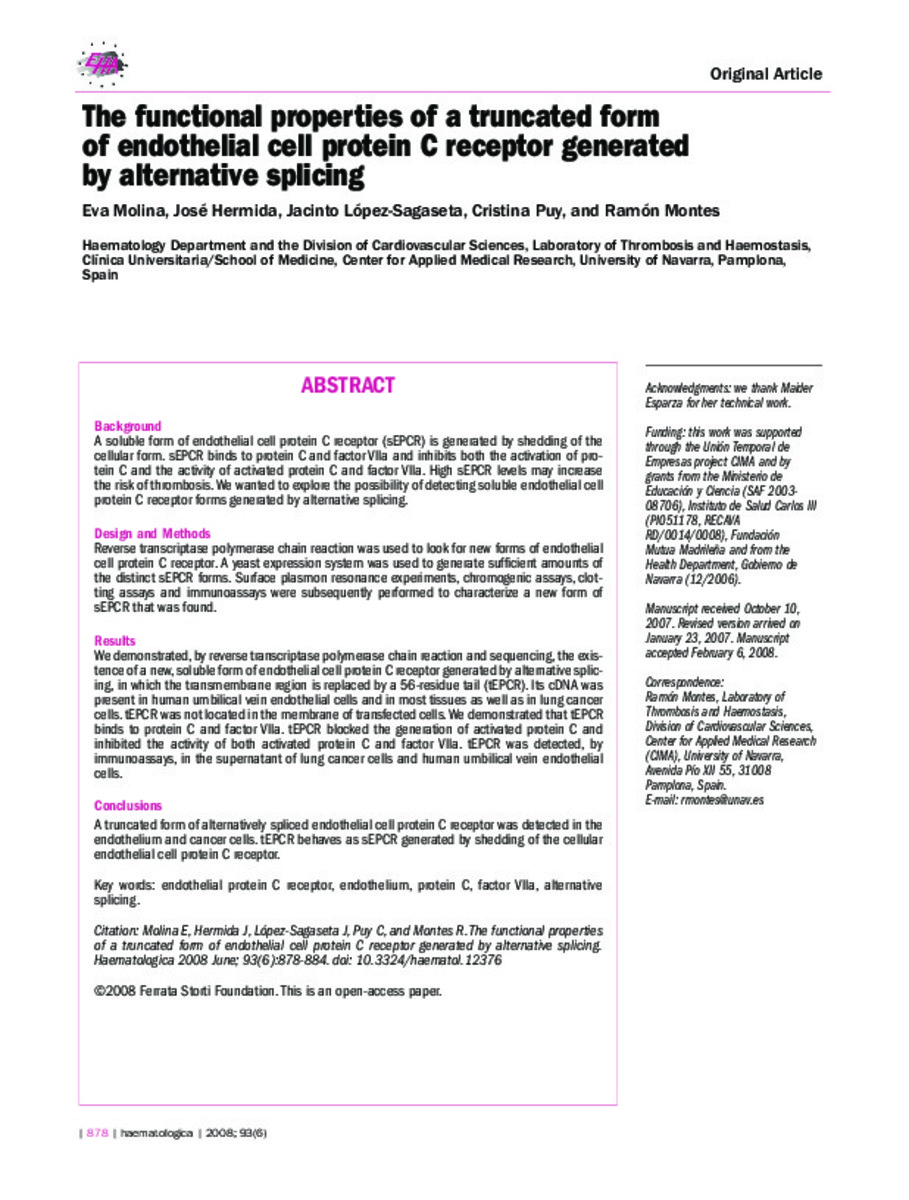The functional properties of a truncated form of endothelial cell protein C receptor generated by alternative splicing
Palabras clave :
Endothelial protein C receptor
Endothelium
Protein C
Factor Vlla
Alternative splicing
Fecha de publicación :
2008
Editorial :
Ferrata Storti Foundation
Cita:
Molina E, Hermida J, Lopez-Sagaseta J, Puy C, Montes R. The functional properties of a truncated form of endothelial cell protein C receptor generated by alternative splicing. Haematologica 2008 Jun;93(6):878-884.
Aparece en las colecciones:
Estadísticas e impacto
0 citas en

0 citas en

Los ítems de Dadun están protegidos por copyright, con todos los derechos reservados, a menos que se indique lo contrario.







